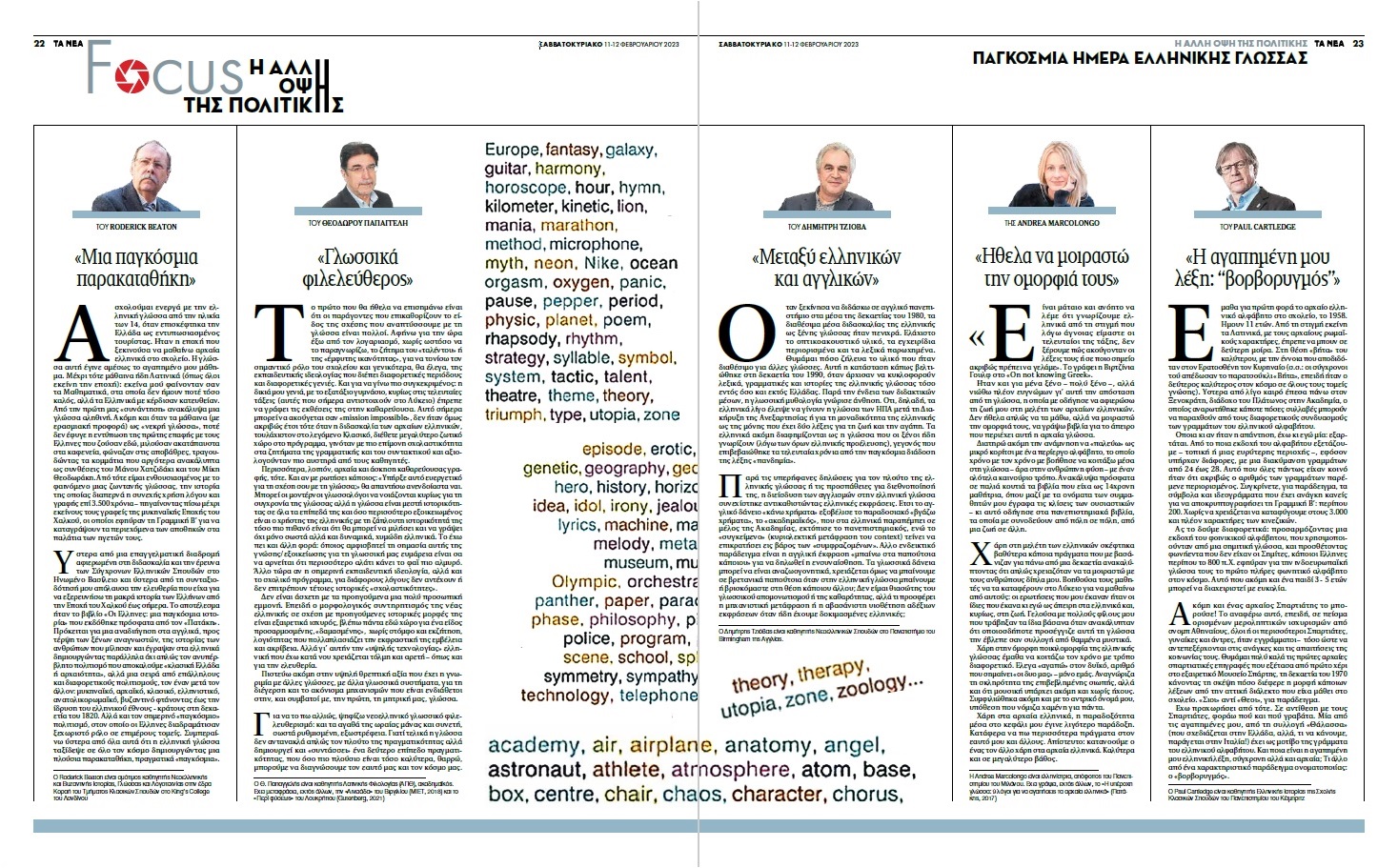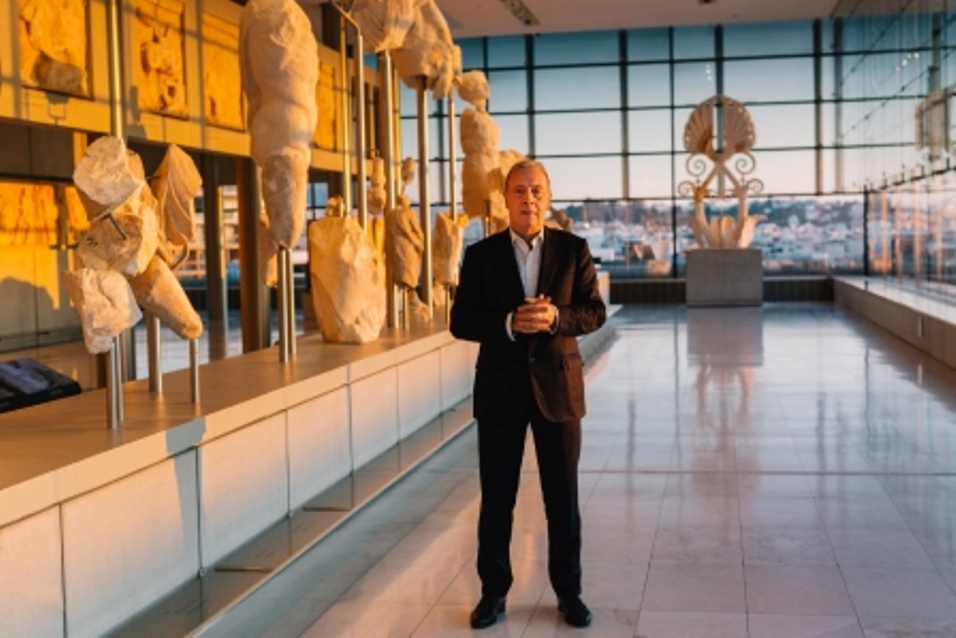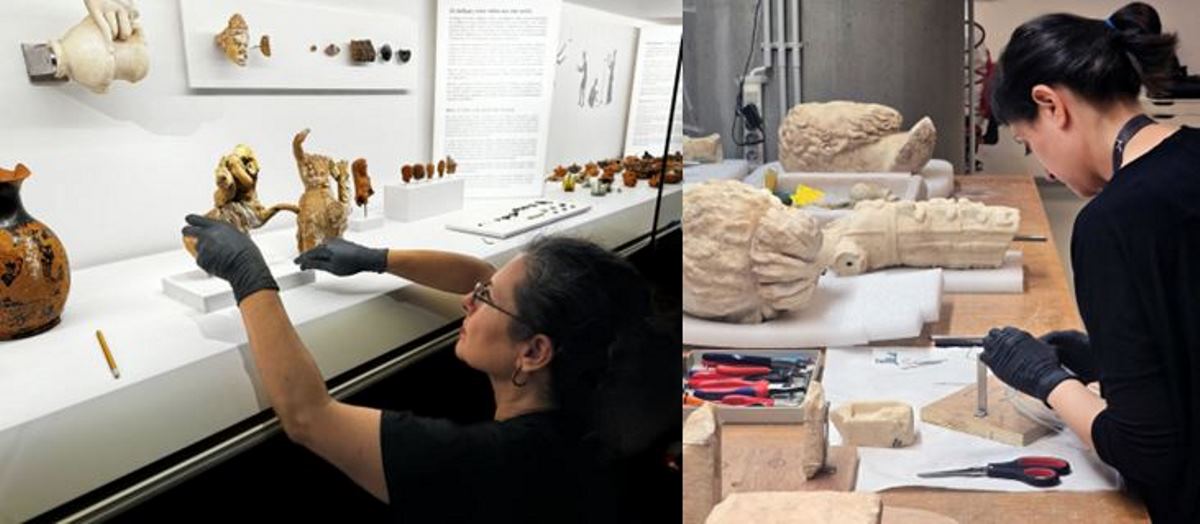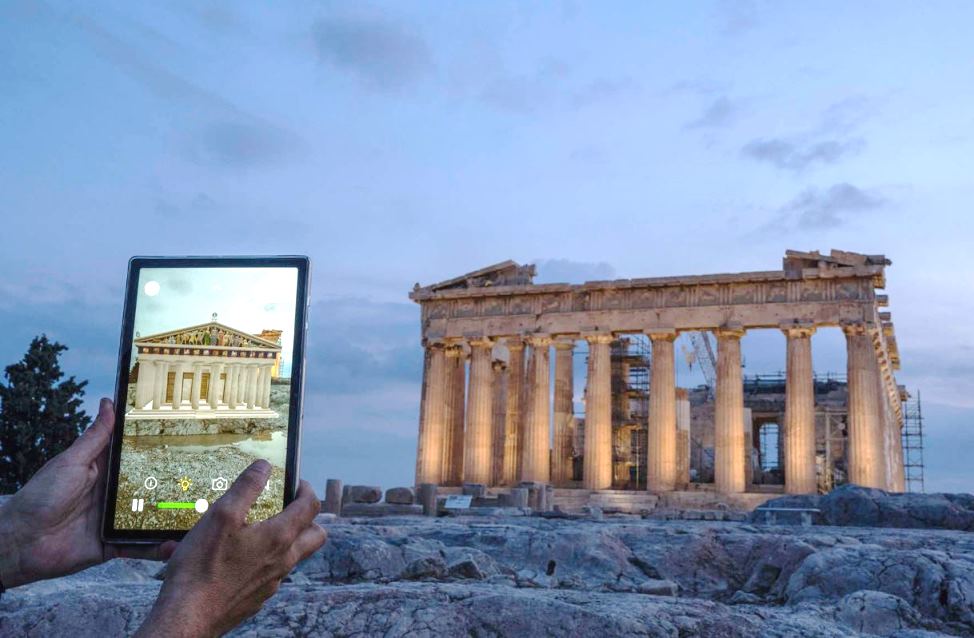2023 News
"My favourite word: 'borborygmos' "[means-tummy-rumble]
I first learned the ancient Greek alphabet at school in 1958. I was 11 years old. From that moment on, Latin, with its ancient Roman characters, had to take second place. In the position of "beta", in the best sense attributed to Eratosthenes of Cyrene (ed.: contemporaries attributed to him the nickname "Beta", because he was the second best in the world in all areas of knowledge). After some time I stumbled upon Xenocrates, Plato's successor in the Academy, who once wondered how many syllables can be produced from the different combinations of letters of the Greek alphabet.
Whatever the answer, I have one: it depends. Upon which version of the alphabet we are looking at - local or over a wider region, since there were several, with a varying number of letters from 24 to 28. What they all had in common, however, was that the overall number of letters remained small. Compare, for example, the symbols and ideograms one needs to command in order to decipher Linear B: about 200. Without mentioning the more than 3,000 characters needed for basic literacy in Chinese.
Let's look at it differently: by adapting a version of the Phoenician alphabet, developed for a Semitic language, and adding vowels that the Semite-speakers did not use, some Greeks around 800 BC invented for their Indo-European language the first fully phonetic alphabet in the world. Something that even a child of 3 - 5 years can manage with ease.
Even an ancient Spartan could! I mention this because, in spite of some biased claims by snobbish Athenians, all or most Spartans, women and men, were literate - enough to cope with all the needs and demands of their society. I remember very well the first ancient Spartan inscriptions that I examined first-hand at the excellent Museum of Sparta, in the 1970s, thinking how different was the form of some (Doric) words differed from those of the Attic dialect I had learned in school. "Sioi" instead of "Gods", for example.
I've been moving on ever since. Unlike the Spartans, I wear a tie from time to time. One of my favourites, from the "Thalassa" collection (designed in Greece, but, oimoi, produced in Italy!), has as its motif letters of the Greek alphabet. And what is my favourite Greek word, both modern and ancient? What else than a typical example of onomatopoeia: the "booborygmos".
Paul Cartledge is Professor of Greek History at the School of Classics, University of Cambridge and Vice-Chair of BCRPM
Paul's words were published in Ta Nea.

The Times Literary Supplement (TLS) front page has the image of a pedimental sculpture in the British Musem's Room 18, which is sometimes refered to as Hermes, and the title: Whose marbles are they anyway? Mark Mazower on Elgin's legacy.

The Aropolis Museum has this on its site in reference to the pedimental sculpture that is featured on the TLS cover: Fragment from a man’s thigh usually identified with Hermes, although some researchers believe he is Kekrops, Theseus or Ares. It is adjusted to the plaster cast of the original remaining sculpture kept in the British Museum in London. Hermes strides to the viewer’s right next to Athena's chariot. He looks back as he stretches his right hand to the front perhaps pulling the reins of the chariot horses driven by Nike. On his back falls his chlamys the edge of which probably was wrapped around his left arm.
The fragment must have broken off from the sculpture and fell on the ground during the removal of the statue from the pediment by Thomas Bruce, lord of Elgin, who was in Greece between 1801-1804 when the country was under Ottoman rule, and forcibly detached most of the sculptures of the pediment still in their original position. It was found later on the Acropolis.
The TLS article by Mark Mazower is entitled 'Give them back!' and reviews William St Clair's 876 page book: Who Saved the Parthenon? A new history of the Acropolis before, during and after the Greek Revolution.
Read Frank Mazower's TLS review of Wlliam's book here.
Reference to William's first book 'Lord Elgin and the Marbles' originally published in 1967, saw William edit and re-publish this over the years as he also investigated the cleaning of the Parthenon Marbles in 1938-9 at the request of Lord Duveen, the donor of the gallery that continues to house them. Mark Mazower writes: "It took St Clair over a decade to wrest the relevant documents from the grasp of the British Museum, and the explosive result was a third and entirely rewritten edition of his 1967 study that ended with the devastating judgement that " the British Museum's stewardship of the Elgin Marbles turns out to have been a cynical sham."
Fred Mazower goes on to praise Wiliam St Clair as a 'magnificent example of an independent scholar'.We'd agree with that as we also remember his input on the UCL debate.
William St Clair's last book is about who really saved the sculptures given the scale of destruction wrought during the Greek struggle for independence. St Clair explains that when the revolution broke out, the British Ambassador Lord Strangford, asked the grand vizier to issue an order to ensure the preservation of the ancient monuments in Athens. William suggestes that the Ottomans in the summer of 1826 saved the Parthenon because that would prove that they deserved to be treated as a European power and would bring them diplomatic leverage.
Mazower concludes: "William St Clair surely knew what he was doing when he wrote a book that bolsters the case for the marbles' restitution to Greece by attributing their survival to the Ottomans."
Also read Suzanne Marchand's review.
I am simply someone who has been lucky in her professional career who feels it is important to contribute to society
Lucy Frazer, UK Culture Secretary, 07 February 2023
UK's Prime Minister Rishi Sunak detached the digital arm of the Department for Digital, Culture, Media and Sport. Now, a new streamlined department will solely focus on Culture, Media and Sport, and will be headed up by Lucy Frazer.
Conservative MP for South East Cambridgeshire, Lucy Frazer was first elected in May 2015, and served on the Education Select Committee.
MP Frazer also served as Financial Secretary to the Treasury in 2021, having previously been appointed as Solicitor General, Minister of State for Prisons and Probations, Parliamentary Under Secretary of State at the Ministry of Justice (January 2018 - May 2019) and Parliamentary Private Secretary to the Lord Chancellor and Secretary of State for Justice as well as the Paymaster General and Minister to the Cabinet Office.
This past year, Frazer was the Minister of State in the Department for Levelling Up, Housing and Communities and spent six weeks as the Minister of State at the Department for Transport during the political turbulence that was autumn 2022.
Prior to becoming an MP, Lucy Frazer practised as a barrister and was appointed as Queen's Counsel in 2013. She decided to go into politics because she wanted to make a difference, “I am simply someone who has been lucky in her professional career who feels it is important to contribute to society,” she said.
Dare we hope that one of the contributions Lucy Frazer can make as she contributes to a fairer future is the need to amend the Musems Act of 1963? It is an old act, and Greece's just request for the reunification of the Parthenon Marbles is never going to go away.
Countless UK Culture Secretaries have failed to do anything to amend the Museums Act of 1963.
The peerless collection of sculptures, the surviving Parthenon Marbles, divided mainly between two great museums of the world, already garner global respect, and UNESCO's too.
We are all, still waiting for the UK to facilitate the reunification of the Parthenon Marbles.
The British Establishment is the main impediment to any resolution of the Parthenon Marbles issue.
Tom Flynn, Partner at Flynn & Giovani Art Provenance Research
I’ve long argued (not too subtly, I grant you) that it’s the cold, dead hand of the British Establishment that is the main impediment to any resolution of the Parthenon Marbles issue. The British Museum Act of 1963 remains the great immoveable object and requires repealing or amending for any progress to happen. While the Tories are in power that seems vanishingly unlikely.
This became abundantly clear again this past week when a comment piece by Emily Sheffield appeared in the London Evening Standard, a ‘newspaper’ owned since 2009 by the Russian oligarch Alexander Lebedev (Lord Lebedev after being ennobled by his chum Boris Johnson).
In 2017, Lebedev appointed Johnson’s Eton and Oxford buddy (and David Cameron’s former Chancellor of the Exchequer) George ‘Austerity’ Osborne as editor. Osborne only lasted a couple of years before leaving for more lucrative pastures (the list of his well-remunerated City positions is as long as the Parthenon frieze).
Who took his place in the editor’s chair? Why Emily Sheffield, of course — sister of Samantha Cameron, the wife of former Tory Prime Minister David Cameron, another Eton and Oxford-educated chum of Osborne and Johnson.
Sheffield didn’t last long as Standard editor. Unlike Osborne, who inexplicably was appointed chairman of the trustees of the British Museum, La Sheffield subsequently satisfied herself with penning the occasional think-piece for her old organ and joining the ghastly Piers Morgan on the Murdoch-owned TalkTV.
Given her family connections to the Eton and Oxbridge Tory clique (her parents are members of the land-owning British gratin), it was no surprise that she chose to hack out a few hundred banal and ill-considered words on why the Parthenon Marbles should stay in London. This in the very week that it became clear that Osborne’s much vaunted “deal” with the Greeks to return the Marbles to Athens was just another tranche of Bullingdon bullshit. He ought to have kept his powder dry until the traditionally entrenched “red lines” separating the two sides had been properly and amicably resolved.
But what really sticks in the craw is not Sheffield’s basic misunderstanding of the issues surrounding Elgin’s desecration of the temple, but utterances like this: “Our ownership has even put pressure on the Greeks to finally build their own beautiful museum.”
Clearly she never visited the old Acropolis Museum on the monument. Anyone who did will know that it was only a matter of time before a new home was built to accommodate the numerous treasures it held. “Our ownership” is a provocative phrase designed to sustain the erroneous idea that Britain has legal title to the sculptures. Ethics be damned, it seems (another entrenched Tory tendency).
Meanwhile, “the onus is on the Greeks to gain our trust if they are to be loaned.” Loaned? The temerity of the British Establishment takes the breath away. You cannot loan something to the person from whom you stole it.
If all her ignorant bloviating were not enough, Sheffield concludes with this: “I’m sorry, dear Greeks, but the Elgins remain here.”
“The Elgins?” What the hell are they? Perhaps Ms Sheffield has been smoking the cannabis that occasioned her expulsion from the élite Marlborough College public school?
“The Elgins”? I almost choked on my moussaka.
Tom Flynn
Partner at Flynn & Giovani Art Provenance Research
Angelina Giovani from Flynn & Giovani, Art Provenance Research took to twitter to respond to Emily Sheffield's Evening Standard article. It's a thread that deserves to be conserved. Thank you Angelina.
You can read Angelina Giovani's thread on 'The Provebance Research Blog' which responds to Emily Sheffield's Evening Standard article: "I’m sorry, dear Greeks, but the Elgin Marbles simply must stay here."
The British museum says it's negotiating what it calls a ‘cultural exchange’ with Greece to return the Elgin Marbles. Also known as the Parthenon sculptures, the ancient works of art have been on display in London for more than 200 years.
However, their presence is a diplomatic flashpoint, amid claims and counterclaims about how Britain got hold of them in the first place. So are the Elgin Marbles heading home, and should cultural artefacts always be sent back to their place of origin?
Guests:
Alexi Kaye Campbell
Member of the British Committee for the Reunification of the Parthenon Marbles

Tatiana Flessas
Associate Professor of Cultural Heritage at LSE

Tiffany Jenkins
Author of Keeping Their Marbles

Mario Trabucco della Torretta
Classical Archaeologist
(pre-recorded)

Watch this TRT episode, here.
Roundtable is a discussion programme broadcast out of London and presented by David Foster, bringing people to the table, listening to every opinion, and analysing every point of view. From fierce debate to reflective thinking, Roundtable discussions offer a different perspective on the issues that matter to you. Watch it every weekday at 15:00 GMT on TRT World.
- Greece's fight over Parthenon marbles sparks debate
- The case for keeping the Elgin Marbles, writes Nigel Biggar for the Telegraph
- Is Britain about to lose its marbles? asks Cahir O'Doherty
- Britain treasures the Parthenon marbles, but consider this: returned to Greece, could they be more valuable? writes Charlotte Higgins in the Guardian
- John Psaropoulos, Al Jazeera, talks to Mary Beard, Trustee of the BM
Page 11 of 14




























